

-
Octagonal cup with musicians and a dancer
Gold
Height 9cm
China, Yangzhou, ca 830s
The pure gold objects discovered on this shipwreck are among the most important discoveries of Tang gold ever made, and the first substantial find outside China itself. The Tang dynasty was the peak period for production of Chinese gold and silver vessels. Production was spurred by foreign metal wares, many from Sasanian Iran and Sogdiana (in present-day Uzbekistan and Tajikistan), which were brought to China by merchants plying the Silk Road. The form of this gold cup (with its footrim and ring handle with thumbplate) is based on Sogdian examples.
The long curly hair and billowing clothing of the musicians and dancer identify them as Central Asian. During the 8th and 9th centuries, such entertainers were popular in China. The bearded faces on the handle are also evidently not Chinese. As the theme of the design is revelry and entertainment, the cup would probably have been used for wine drinking on such an occasion. This cup is the largest of the type known in the world.
It remains a mystery for whom the precious metal wares on this ship were intended. These gold objects might have been gifts from the emperor. Or they might have been to trade for desirable imports from abroad, such as spices, pearls, and other exotic rarities.

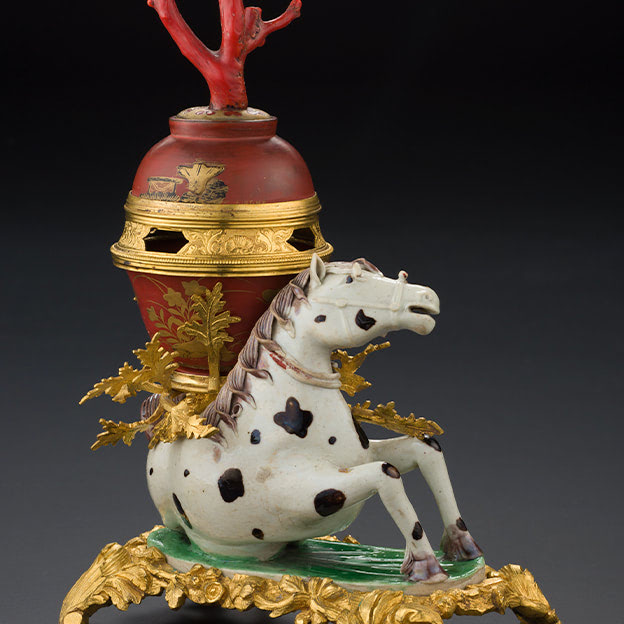
-
Mounted incense burner
Europe, 18th century
Porcelain (China, around 1700), glided bronze mounts (France, mid-18th century), lacquer bowls (Japan, 18th century), red coral
Height 26.2cm
This object was assembled in Europe combining Chinese porcelain, Japanese lacquer (the bowls set rim to rim have a metal tray inside to hold burning incense), and red coral. Glided bronze fittings made in Europe hold it all together.
Fantasises like this that blend objects from different cultures and mix the natural with the man-made, were favoured in the Baroque and Rococo periods in Europe.

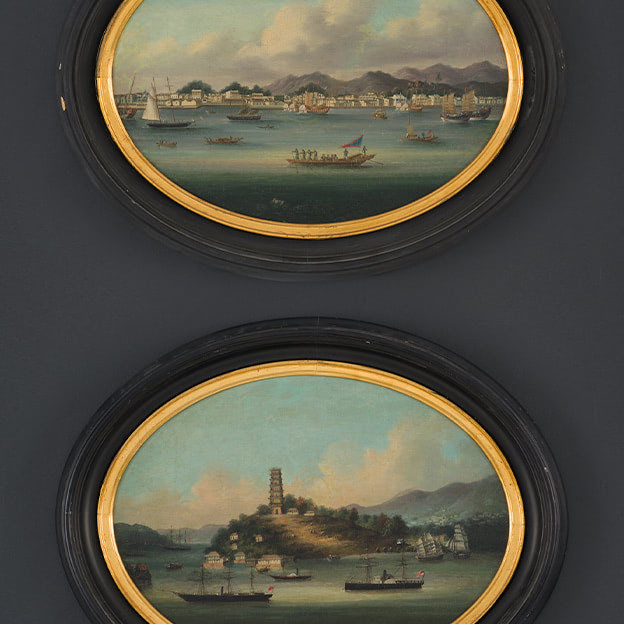
-
Two port views Fuzhou and Xiamen
Chinese artist, China, around 1850
Oil on canvas
Xiamen (Amoy) and Fuzhou were the two principal ports in Fujian province. Views of Chinese port cities were acquired by merchants of all cultures living in the Asian ports, and were not only made for Westerners. For example, paintings of Chinese ports are recorded in Jakarta, Singapore, and Malacca in the 19th century.

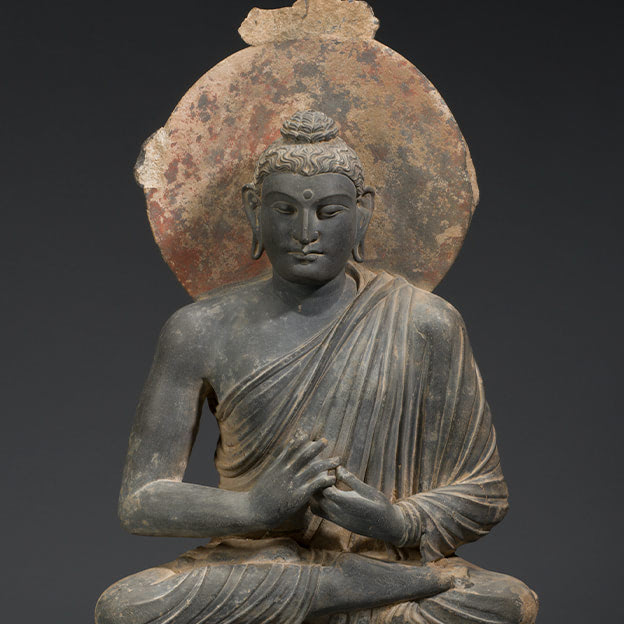
-
Buddha teaching
Gandhara, 3rd or 4th century
78.5 x 46.5 x 15 cm
Schist
The hand gesture (dharmachakra mudra) signifies the turning of the wheel of Buddhist law, and therefore indicates the Buddha teaching. The drapery, strong, muscular form, and the facial features show influence from Western classical styles. But his yogic pose and eyes downcast in contemplation show the deep spirituality of the Buddhist religion.

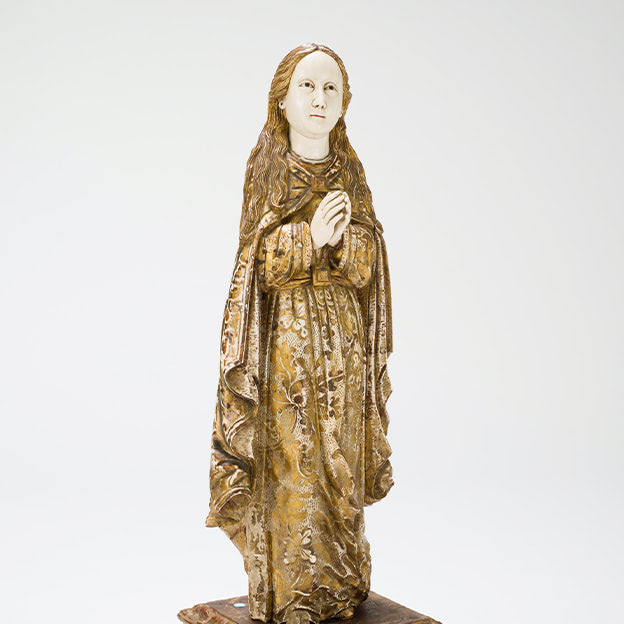
-
The Virgin Mary
Mid-17th century Ivory, painted and glided
Height 60cm
Philippines, Manila; decorated in Mexico
This is one of the largest ivory figures known from the Philippines. The Asian features of the Virgin hint that it was carved by a Chinese artist. The tucked-in robe at the back has been read as a sign that it was made in the Philippines in the 17th century. From there it was shipped to Mexico, where it was painted and glided.

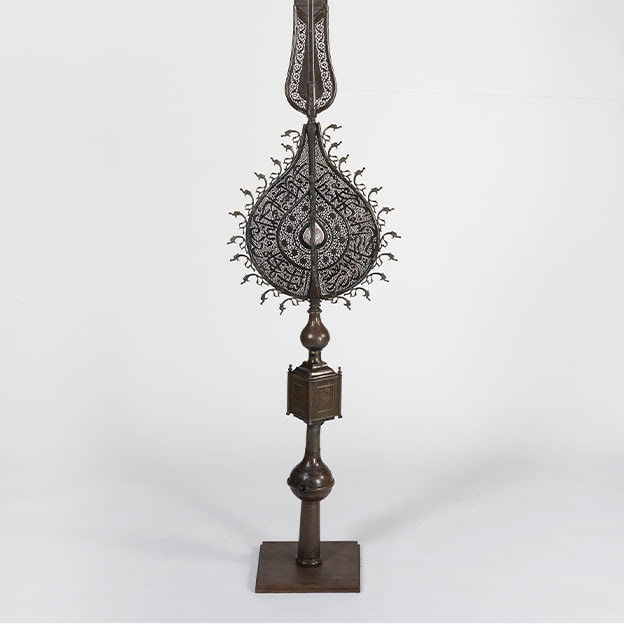
-
Alam (processional standard)
Gilded brass and bronze, enamel
Height 332cm
Iran, early 18th century (Safavid period)
Signed: Work of Muhammad Taqi, the worthy son of master Malik Muhammad, Dawatgar-bashi Inscription: Qur’an 110, Surat al-Nasr (The Help) 1: When comes the Help of Allah, and Victory,
2: And thou dost see the people enter Allah’s Religion in crowds,
3: Celebrate the praises of thy Lord, and pray for His Forgiveness: For He is Oft-Returning [in Grace and Mercy]
With the establishment of the Safavid dynasty (1501–1722), Shi’ism became the state religion of Iran. Processional standards such as this ‘alam would have been used in the commemoration of ‘Ashūra’ where the battle of Karbala in 680 CE/AH 61 is remembered for the death and martyrdom of al-Husayn bin ‘Alī, the grandson of Prophet Muhammad and the third imam of Shi’a Muslims.
The ‘alam is composed of three main sections. At the base, a pierced cube with invocations to the Prophet rises from a tubular brass shaft. The central section is composed by two pear-shaped panels, set at right angles to each other, decorated with religious inscriptions. At the centre of this three-dimensional structure, which is ringed with dragon heads, is an enamelled element painted with floral motifs. Rising above is a finial inspired by the sword of ‘Alī, son-in-law of the Prophet and the first Shi’a imam.

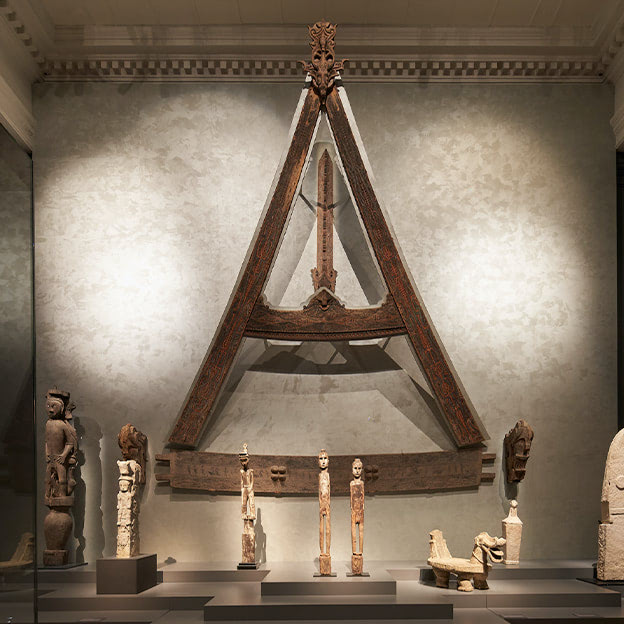
-
Granary façade: Outer gable panels
Toba Batak
Northern Sumatra, early 20th century
Wood, pigments
A steep, gabled roof that extends beyond the substructure is typical of Toba Batak architecture. They were fond of richly decorated facades, with the use of carved, lion-like singa heads, horizontal panels, and roof supports.
Long carved panels known as pandilati, or sometimes dilapaung, were placed in the roof gable of the ancestral house. The term dila means “tongue”, and so pandilati represented the tongue of the living house. The Batak believed that an extended tongue could ward off evil spirits. This type of pandilati panel would have been hung on the inner part of the house gable.
Intricately carved and painted, this panel, known as a tomboman, would have been placed as a support between the main gable panels of the clan house. While the decorative elements were symbolic, they also show the fierce rivalry between clans, each striving to outshine their neighbours with more impressive decorations.
Decorative carvings placed high in the house gable of large Batak clan houses are called jenggar. This one is carved in the form of a singa with elaborate horns.
The ancestral house was the centre of family life for the entire clan, and needed to be protected from both real and spirit attacks. Lion images were thought to frighten off both pests and spirits.

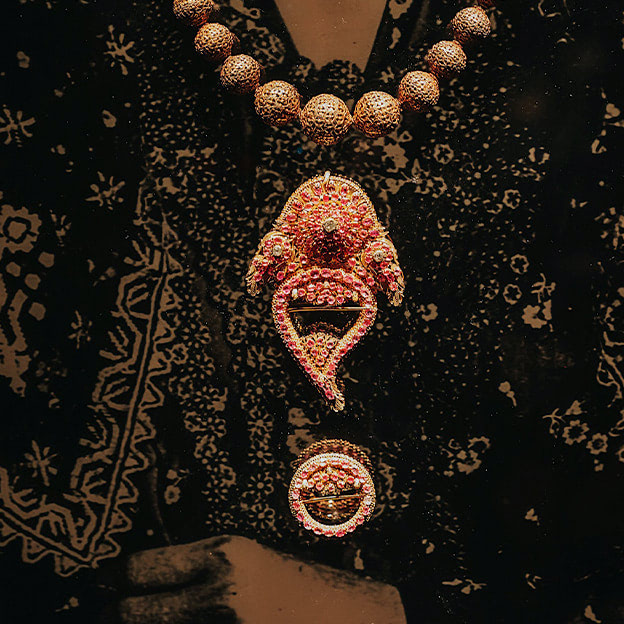
-
Set of blouse fasteners (kerongsang)
Malay Peninsula, Penang, late 19th century
Gold, pink rubies, diamonds
Collection of Dr Roger and Mrs Betty Mariette
These extraordinary blouse fasteners are worn by women all across island Southeast Asia to fasten the open front of their blouse. This set comprises of a larger, heart-shaped brooch (kerongsangibu, “mother”) and two smaller circlets (kerongsanganak, “child”). They are worn with the largest brooch at the top and the smaller ones below.
